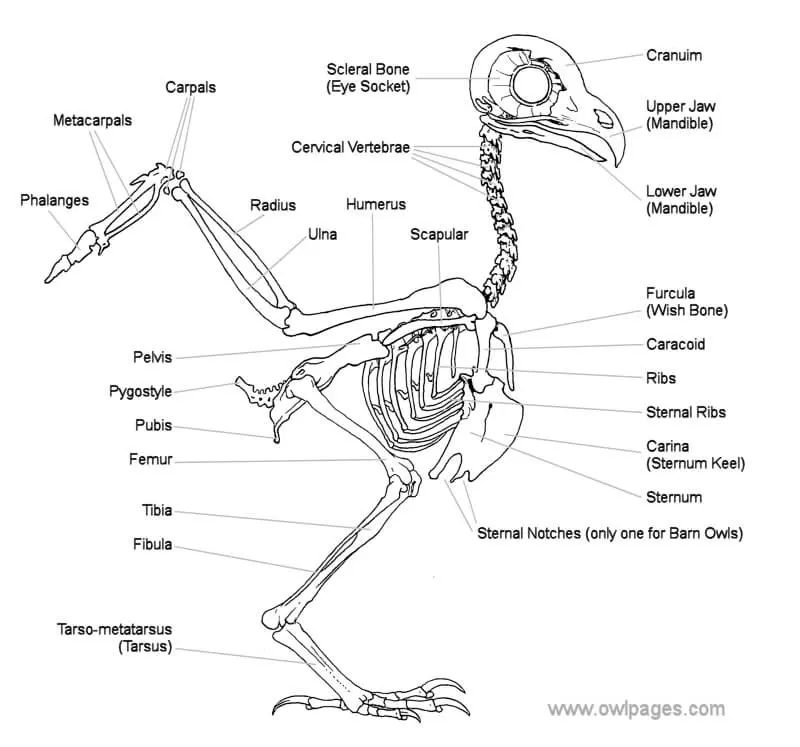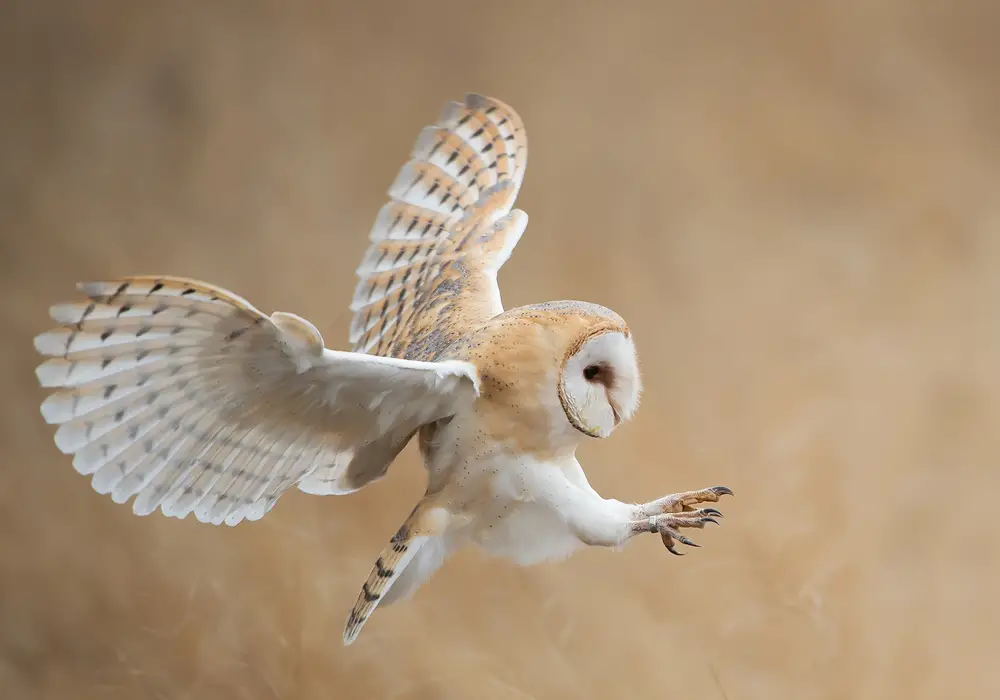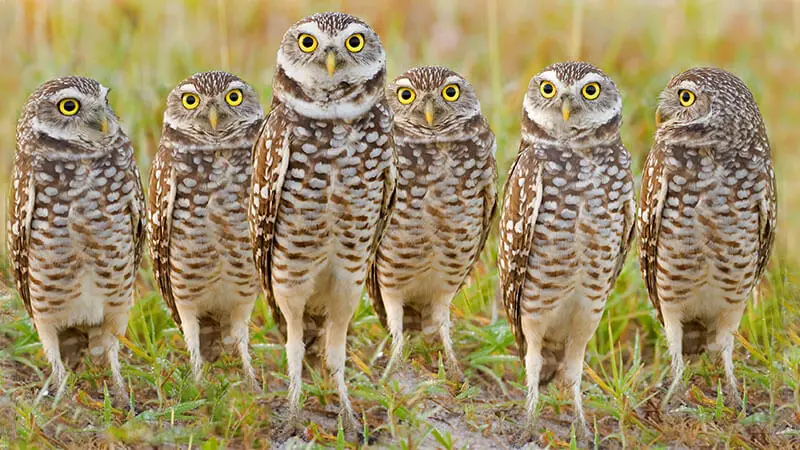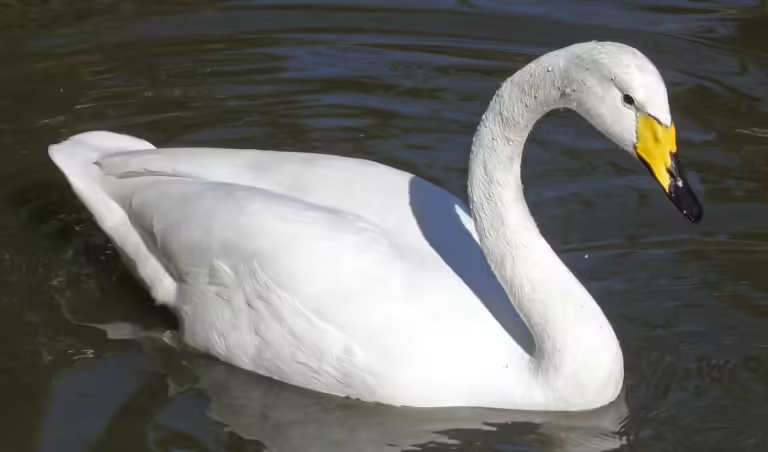Owls have long captivated humans with their haunting calls, nocturnal habits, and striking appearance. Often associated with wisdom and mystery, these birds of prey are widely admired for their large, expressive eyes, which seem to pierce the darkness. However, beyond their captivating gaze lies another feature that is equally fascinating but often overlooked: their legs. This blog post delves into the unique anatomy of owl legs, exploring how these adaptations serve them in hunting, flying, and surviving in various environments. We’ll also uncover some surprising facts about owl legs that highlight just how remarkable these birds truly are.
The Anatomy of Owl Legs
To understand why owl legs are so special, it’s important first to take a closer look at their anatomy. Owl legs are deceptively long, hidden beneath layers of dense feathers. When the feathers are removed, it becomes evident that owls possess long, slender legs, which are crucial for their predatory lifestyle.

1. Bone Structure and Joints
Owls, like other birds, have a unique skeletal structure. Their legs consist of a short thigh bone (femur) and longer shin bones (tibia and tarsus). What many people mistake for an owl’s knee is actually the ankle joint. This misconception arises because the actual knee is located higher up, closer to the body, and is covered by feathers. The ankle joint, visible as a prominent bend, plays a significant role in the owl’s ability to grip and manipulate objects with precision.
2. Zygodactyl Feet
One of the most distinctive features of owl legs is their zygodactyl feet, meaning they have two toes pointing forward and two backward. This configuration allows owls to have a powerful grip, essential for capturing and holding onto prey. The zygodactyl arrangement also aids in perching securely on branches, giving owls a stable base from which to launch their hunting attacks.
3. Talons and Claws
At the end of each toe is a sharp talon, a crucial tool for hunting. These talons are not just for show; they are highly effective weapons that owls use to catch and kill their prey. The sharpness of the claws, combined with the strength of the legs, enables owls to exert a formidable grip on their prey, ensuring they can’t escape.
The Purpose of Long Legs
The impressive length of owl legs serves several key functions, each of which plays a vital role in their survival.
1. Enhanced Hunting Capabilities
Owls are predators, and their legs are built for hunting. The long legs provide owls with the reach they need to strike prey from a distance, especially when they are swooping down from a perch. The added length also helps them navigate through grass and underbrush, where their prey might be hiding. The strength of their legs allows them to subdue prey quickly, reducing the risk of injury from struggling animals.
2. Flight Efficiency
Despite their formidable appearance, owls are built for silent flight. Their legs contribute to this by being lightweight and positioned close to the body. This central positioning helps maintain balance during flight, a critical aspect of their hunting strategy. By keeping their weight centralized, owls can maneuver more effectively in the air, making them agile predators.
3. Temperature Regulation
Owls inhabit a wide range of environments, from the cold tundras to the warm forests. In colder climates, the feathers covering their legs help with insulation, keeping them warm during their nighttime hunts. The long legs also minimize heat loss, as the feathered areas can retain warmth more efficiently than exposed skin. This adaptation is crucial for owls living in harsh conditions, where maintaining body heat is essential for survival.
4. Silent Movement
One of the hallmarks of owl behavior is their ability to move silently. This is not only due to their wing structure but also because of their legs. When landing, the long legs act as shock absorbers, allowing them to touch down quietly. This stealth is vital for hunting, as it allows owls to approach their prey without being detected.

Interesting Facts About Owl Legs
Owls are full of surprises, and their legs are no exception. Here are some fascinating facts that underscore just how unique these birds are.
1. Owls Can Rotate Their Toes
Unlike many birds, owls have the ability to rotate one of their back toes to face forward. This adaptation allows them to better grip their prey, adjusting their hold depending on the size and movement of the animal. This flexibility also aids in perching, giving them a firm grip on various surfaces.
2. Owls Use Their Feet Like Hands
Owls don’t just use their talons for catching prey; they also use them to handle it. After capturing their prey, owls will often use their feet to hold the animal while tearing it apart with their beak. This dexterity is akin to using hands and showcases the versatility of their legs and feet.
3. Some Owls Go Fishing
While most people associate owls with hunting small mammals and birds, some species, like the Pel’s Fishing Owl, are adept fishers. These owls have specially adapted legs of owls and talons that allow them to snatch fish out of the water. They sit on branches overhanging rivers and streams, waiting patiently for the right moment to strike.
4. Owls Can Walk and Run
While it’s not common to see owls on the ground, they can and do walk when necessary. Some species, like the Burrowing Owl, are known to run along the ground, chasing after insects and other small prey. Their ability to walk and run adds another layer to their hunting strategies, making them even more versatile predators.
5. Leg Feathers Provide Camouflage
In addition to warmth, the feathers covering an owl’s legs serve another purpose: camouflage. These feathers help break up the outline of the owl’s body, making it harder for prey to spot them. This is especially important for species that hunt in open areas, where staying hidden is key to successful hunting.

The Evolution of Owl Legs
The unique structure of owl legs is the result of millions of years of evolution. Over time, owls have developed legs that are perfectly suited to their nocturnal, predatory lifestyle.
1. Adaptation to Different Habitats
Owls are found in diverse habitats, from dense forests to open grasslands. Each environment presents different challenges, and owl legs have adapted accordingly. In open areas, longer legs are advantageous for reaching through tall grass, while in forests, shorter legs allow for better maneuverability among trees and underbrush.
2. Evolutionary Arms Race
The development of long, powerful legs can also be seen as part of an evolutionary arms race. As prey animals have evolved ways to evade predators, owls have adapted in turn, developing legs that give them the reach, strength, and speed needed to capture even the most elusive prey.
3. The Role of Feathers
The evolution of leg feathers is another fascinating aspect of owl biology. These feathers not only provide warmth but also reduce noise, an essential trait for a nocturnal hunter. The development of such specialized feathers highlights the importance of stealth in owl survival.
The Significance of Leg Length Variation
Not all owl species have legs of the same length, and these variations can tell us a lot about their behavior and ecology.
1. Species-Specific Adaptations
Some owls, like the Great Grey Owl, have particularly long legs, which they use to reach through deep snow to catch prey. Other species, like the Burrowing Owl, have shorter legs suited for running and catching prey on the ground. These differences in leg length are closely tied to the owl’s habitat and hunting style.
2. Influence on Hunting Techniques
The length of an owl’s legs can influence its hunting techniques. Owls with longer legs are more likely to hunt from a perch, using their height to spot prey from a distance. In contrast, owls with shorter legs may rely more on ground-based hunting, using their agility to chase down prey.
3. Adaptation to Prey Type
The type of prey an owl hunts also affects its leg length. Species that hunt larger prey, such as rabbits or hares, often have longer, stronger legs to handle the increased weight and struggle. Conversely, owls that hunt smaller prey, like insects or small rodents, may have shorter legs that provide the speed and agility needed to catch these fast-moving animals.

Conclusion: The Hidden Power of Owl Legs
Owl legs may not be the first thing that comes to mind when thinking about these mysterious birds, but they are a key part of what makes owls such successful predators. From their unique bone structure and zygodactyl feet to their ability to move silently and handle prey with precision, owl legs are a marvel of natural engineering.
These adaptations allow owls to thrive in a variety of environments, from the icy tundras to the dense forests. Whether it’s using their legs to snatch fish from a river or to silently swoop down on an unsuspecting rodent, owls demonstrate time and again why they are among nature’s most skilled hunters.
By understanding more about the anatomy and function of owl legs, we gain a deeper appreciation for these incredible birds and the complex adaptations that have allowed them to survive and thrive in the wild. So, the next time you hear the haunting call of an owl, take a moment to think about the remarkable legs that carry this bird through the night, a silent and deadly hunter in the shadows.
FAQs: Science Behind Owl Legs
What is the science behind owl legs?
The science behind owl legs involves understanding their anatomy and adaptations that enhance their survival. Owls possess unique leg structures that are crucial for their predatory lifestyle. Their long legs provide leverage and strength, allowing them to capture prey effectively. The anatomy of an owl’s leg includes long and thin bones that contribute to their agility and speed while hunting.
Why do owls have long legs?
Owls have long legs primarily for hunting and mobility. The length of owl legs enhances their ability to pounce on prey from a distance. The longer legs also allow them to navigate through various terrains, including forests and open fields, where they can effectively hunt small mammals and birds.
How do the legs and feet of owls help them hunt?
The legs and feet of owls are designed for powerful strikes and grasping prey. The talons at the end of their legs are sharp and strong, allowing owls to catch and hold onto their prey securely. Moreover, the long legs enable them to launch from a perch and reach their target swiftly, enhancing their hunting efficiency.
What are the different owl species and their leg characteristics?
Various owl species exhibit different leg characteristics. For instance, the great gray owl has relatively longer legs compared to the barn owl, which has shorter legs adapted for its unique hunting style. The burrowing owl, known for its shorter stature, has legs and feet that allow it to navigate its ground-dwelling habitat effectively. Each species has adapted its leg structure to meet its ecological needs.
Do all owls have feathered legs?
No, not all owls have feathered legs. While many species, like the snowy owl and great horned owl, have thickly feathered egs that provide insulation against cold temperatures, others, such as the barn owl and the eastern screech owl, have bare or sparsely feathered legs. This variation in feather coverage is often related to their habitat and hunting strategies.
For instance, owls that inhabit colder environments tend to have more feathered legs, which help to keep them warm during chilly nights when they are most active. In contrast, owls that live in milder climates may not need as much insulation, allowing for a different feather structure.
Additionally, the lack of feathers on the legs of certain species can aid in their hunting techniques. Bare legs can help owls maintain a better grip on slippery prey, such as fish or small mammals, and allow for more effective movement through their environment.
Overall, the diversity in leg feathering among owls is a fascinating example of how these birds have adapted to their specific ecological niches.













